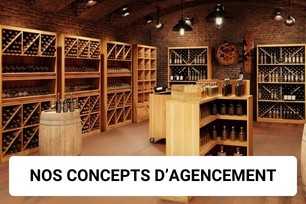-
MenuBack
-
Products
-
-
-
By product category
-
-
-
By profession
-
-
-
-
-
By product category
-
-
-
By profession
-
-
-
-
-
By product category
-
-
-
-
-
-
By product category
-
-
-
By profession
-
-
-
Business
-
-
Braziers
-
-
Our range of fire pits
-
-
-
-
-
- Second-hand
- Destocking
-
Customer projects
-
-
My layout project
-
Everything you need to know about FSC and PEFC certifications.
You have probably already heard of the PEFC and FSC forest labels? But do you really know what they mean? Here are a few explanations to help you understand what these labels are for.

What's a forest label?
It is a certification that attests to the sustainable management of forests, including specifications that must be respected by the parties involved (owners, operators, etc.) for each stage, starting with the forest, then production and processing to the customer.
Certification is obtained after an audit by an accredited independent body and is based on three criteria: environmental, societal and economic respect.
- From an environmental point of view, the label attests to respect for the forest, the prevention of natural risks, the management of natural resources and respect for biodiversity.
- From a societal point of view, the aim is to develop socially responsible sectors with safety at work in the forest, while promoting local employment, etc...
- And finally at the economic level, it is a question of securing the sector in the face of the complexity of the supply chain, respecting production capacity, wood tracking, sustainable forest management and transparency right up to the consumer.
The entire supply chain, production and distribution must be certified in order to guarantee a certified eco-responsible product to the consumer.
What is the difference between PEFC and FSC?
These two labels have one thing in common: they both work for the protection of forests and biodiversity.
However, there are differences: the FSC (Forest Stewardship Council) programme, translated as "good forest management advice", is mainly concerned with imposing an initial level of quality on the forest, whereas the PEFC (Programme for the Endorsement of Forest Certification schemes) certification requires a commitment to the constant improvement of forests.
- The FSC sets global requirements for responsible forest management that is socially beneficial to local populations and economically viable. This label is supported by major NGOs such as WWF and Greenpeace.
- A product bearing the PEFC label is part of a responsible approach to sustainable forest management. It mainly certifies European wood and wood from temperate zones (Europe and South America). You can rely on this label if you wish to choose local woods. The certification must be renewed every five years.
To better understand, watch this video made by PEFC.
In conclusion: the main principles of sustainable forest management are as follows:
- Do not harvest more than is produced in the forest...
- Consider natural regeneration or tree planting
- Conserving forests of high biological interest
- Preserve large wooded areas
- Protecting biological biodiversity
- Prohibit the use of hazardous chemicals
- Encouraging local work
FSC & PEFC are the labels for forest friendly wood.
Learn more about our eco-responsible approach.













